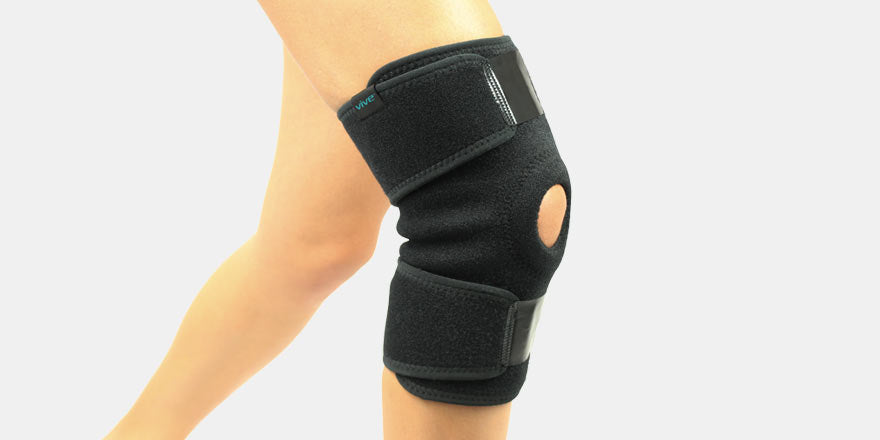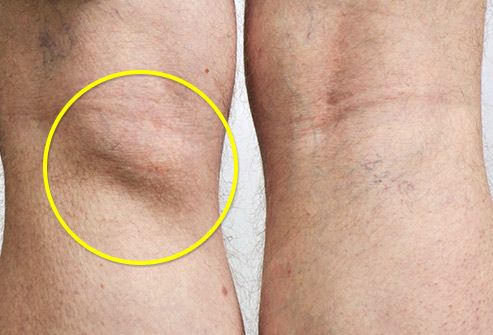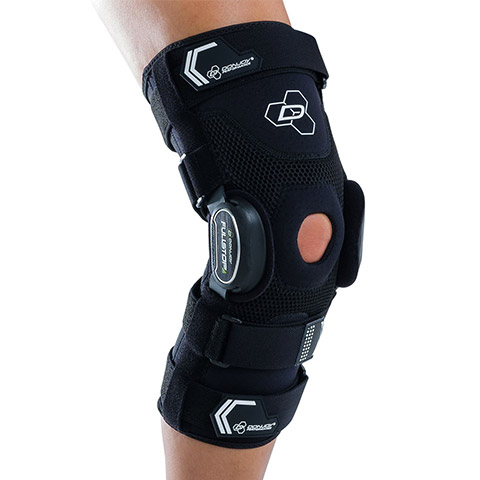Occasional Knee Popping
Pain in the knee with occasional popping when walking may be a sign of soft tissue injury or fracture. The knee is a complex joint made up of bone, cartilage, ligaments and other soft tissues. Because of its involvement in walking, and wear and tear sustained in intense athletic activities, the knee is prone to injury. Pain in the knee with occasional popping when walking may be a sign of soft tissue injury or fracture. The knee is a complex joint made up of bone, cartilage, ligaments and other soft tissues. Because of its involvement in walking, and wear and tear sustained in intense athletic activities, the knee is.
What Causes a Clicking Sound in the Knee?
The knee joints can be noisy. Knee clicking, popping, or crunching sounds are common and typically no cause for concern. They’re often the result of soft tissue stretching over the joint or bony protrusions.
But if you experience knee clicking with pain or swelling, it may indicate a serious injury or osteoarthritis.
Your knee joint sits where the femur (thighbone), tibia (shinbone), and a protective shield called the patella (kneecap) meet. Since the knee bears most of your body weight, its cartilage, ligaments, and tendons are especially vulnerable to everyday wear and tear.
Two pieces of cartilage act as “shock absorbers,” providing a cushion between the femur and tibia bones. These are the menisci.
Other essential parts of the knee include the articular cartilage, the collateral and cruciate ligaments, and the quadriceps and patellar tendons.

Why Is My Knee Clicking? Causes
There are various reasons why you can experience knee clicking. Below are some of the most common causes:
Knee Clicking with No Pain
Your knee clicking when walking, squatting, or straightening the leg could simply be due to gas bubbles. As the pressure in your knee joint changes, small bubbles of gas build up in the region. These bubbles burst with certain movements, making the popping sound.
Noisy knees can also result from the stretching of a tendon or ligament over a bony lump. You may hear a clicking noise when the tissue snaps back into place.
Another cause of pain-free clicking may be scar tissue moving over the bones.
Knee Clicking with Pain
If there’s a clicking sound accompanied by swelling and pain, a sensation of catching in the joint, or if the knee gives out, the following causes may apply:
Unnecessary tissue around the knee: After a serious injury to the knee, if it is not treated or if it does not heal properly, you can develop unnecessary tissue around the knee. When this happens, the tissue gets tangled between certain parts of the joint, which causes the clicking noise when you extend the joint.
Occasional Knee Popping Back
Runner’s knee: You might think that constant running is beneficial for your health, but if you put a lot of stress on the tibia, you can develop runner’s knee. This occurs when the kneecap is out of line and does not track properly along the femur. The tibia and lower bones in the leg protect the kneecap, but when these bones are not aligned properly, the knee will click when you bend it.
Once known as chondromalacia, this unevenness of the patella is now referred to as patellofemoral pain syndrome. Many will feel this type of knee clicking when squatting.
Severe damage to the meniscus and shock absorber: The meniscus is a cushion between the bones of your knee, and if it is damaged and does not heal properly, the balance of your knee is thrown off. This damage can also cause the knee to turn when you put force on it—and this can cause the knee to develop a clicking sound.

You might experience this noise and pain when moving the knee back and forth, straightening the leg, or climbing or descending stairs. Often, the pain comes and goes. These are likely signs of a meniscus tear, and you should seek medical attention for confirmation.

Meniscal cysts: Commonly linked to meniscal tears, these cysts form when synovial fluid leaks out of the joint and collects within or next to the meniscus. They are found in one percent to four percent of knee MRI scans.
Osteoarthritis:Osteoarthritis in your legs can spread to the knees. The knees can become inflamed and misaligned, which will cause a clicking sound, along with persistent painful popping.
ACL tear and MCL tear: Both tears will cause the knee to click; the tears can also lead to chronic pain, knee stiffness, and tenderness.
Baker’s cyst: Swelling in the sunken hollow found at the back of the knee is called a Baker’s cyst. Symptoms like stiffness and pain are common and may intensify when the knee joint is in motion or flexed.
Knee Popping Out Of Place
Osteochondritis dissecans of the knee: Osteochondritis dissecans (OCD) is a lesion that forms in the knee joint when bone or cartilage tissue dies due to poor oxygen supply. There may be a complete or partial separation of the lesion from the underlying bone. Some patients report knee clicking sounds; locking of the knee; weakness of the quadriceps and knee; as well as mild-to-severe stiffness, swelling, and pain.
Patella dislocation: A patella dislocation refers to when the kneecap slips out of its socket and gets stuck in the incorrect position. This type of injury is widespread, though it’s more common in women and adolescents. Conversely, a kneecap subluxation occurs when a kneecap is partially displaced and then snaps right back into the correct position. It is not as severe as a total dislocation but may still trigger clicking and pain.
Exercise Tips to Stop Knee Clicking
If you want to keep your knee strong, you need to exercise all aspects of your lower body:
Exercising your quadriceps is essential if you want to keep your knee sturdy and protected. Certain exercises that require leg extensions or static contraction of the quads will strengthen this muscle. Try the following exercise to strengthen the quads:
Sit up tall on the floor and keep both legs straight. Place a rolled-up towel underneath your right thigh, close to the knee. Bend your left knee; make sure your left foot is kept flat on the floor and that you do not lift your right thigh when bending your left knee. Complete four sets of 10 reps.
The last thing you want is an imbalance between your hamstrings and your quads; this will make your knee more vulnerable to injury. You want to strengthen the back part of your hamstrings to prevent this imbalance. One exercise that works well is a hamstring-strengthening contraction.
To perform this, you will need to lie with your back pressed against the floor and have your knees bent at a 45-degree angle. Lift your toes off of the floor; press down with your knees when doing this so that the hamstrings will contract. Complete four sets of 10 reps.
A good accessory to have when strengthening the knee is an IT band strap. It provides resistance for the knee when you use the band to extend it. To use it efficiently, stretch the strap behind both the left and right knees when you are standing. Bend your left knee while shifting your hips to the right; this will intensify the stretch. Hold the position for 30 seconds for maximum results.
Knee Popping When Straightening Leg
Additional Exercises to Quiet Cracking Knees
Myofascial Calf Release
Another useful exercise involves self-myofascial release (SMR) of the calf muscles. SMR is a popular stretching technique that aims to relax tension in the muscles and joints. It’s thought to improve both muscle recovery and joint range of motion.
A relaxed calf muscle will benefit your kneecap.
Mechanical Popping
Start by sitting down on the floor and placing a tennis ball under your calf. Put your other leg on top. Then roll yourself over the ball back and forth. Pause when you locate a tender spot, and repeatedly flex and release the foot for 30 seconds.
Inner-Thigh Squats
You can also avoid knee pain by strengthening your inner-thigh muscles. And when it comes to building leg muscles, squats are hard to beat.
Stand up straight with your feet shoulder-width apart and toes pointed outward at 45 degrees. Put your weight onto your heels. Lower your body to a squat, bringing your hips back and keeping your knees out to the sides.
Dip as low as possible, making sure not to bend past a 90-degree angle. Then push up with your heels.


Try performing three sets of 15, three days each week.
Final Thoughts on Knee Clicking Sounds
The sound of your knee clicking, cracking, or popping can be a noisy yet benign inconvenience. But it can also signal severe damage in the form of tears, osteoarthritis, or displacement of the kneecap.
Knee clicking with pain is abnormal and warrants a visit to the doctor’s office. Swelling and buckling of the knee are also causes for concern.
You can protect your knee against chronic pain and temporary injuries by strengthening the joint, as well as the surrounding muscles. Squats, myofascial release, and IT band stretches can be particularly effective.
“Common Knee Injuries,” OrthoInfo; https://orthoinfo.aaos.org/en/diseases–conditions/common-knee-injuries/, last accessed May 29, 2018.
Watts, E., “Meniscal Cysts,” OrthoBullets; https://www.orthobullets.com/knee-and-sports/3006/meniscal-cysts, last accessed May 29, 2018.
Nordqvist, C., “What Is a Baker’s cyst (Popliteal Cyst)?” MedicalNewsToday, December 14, 2017; https://www.medicalnewstoday.com/articles/184714.php, last accessed May 29, 2018.
“Osteochondritis Dissecans of Knee (OCD),”Washington University Orthopedics; https://www.ortho.wustl.edu/content/Patient-Care/3187/Services/Pediatric-and-Adolescent-Orthopedic-Surgery/Overview/Knee-Education-Overview/OCD.aspx, last accessed May 29, 2018.
Jacobs, B., “Knee Osteochondritis Dissecans Clinical Presentation,” Medscape, April 28, 2017; https://emedicine.medscape.com/article/89718-clinical, last accessed May 29, 2018.
“Patellar Instability,” Miotech Orthopedic Group; https://www.miotechstore.com/collections/patellar-instability, last accessed May 29, 2018.
Cheatham S., et al., “The Effects of Self-Myofascial Release Using a Foam Roll or Roller Massager on Joint Range of Motion, Muscle, Recovery, and Performance: A Systemic Review,” International Journal of Sports Physical Therapy, Nov. 2015; 10(6):827-838; https://www.ncbi.nlm.nih.gov/pmc/articles/PMC4637917/, last accessed May 29, 2018.
Miller, B., “6 Exercises to Help Make Your Knees Stop Cracking and Popping,” Prevention, April 27, 2015; https://www.prevention.com/fitness/a20455297/exercises-for-cracking-knees/, last accessed May 29, 2018.
Fever or chills, dry cough, shortness of breath or difficulty breathing, loss of sense of smell and taste. These are just a few of the scary symptoms that people infected with COVID-19 are reporting. Usually it takes a few weeks—or even more than a month—for these manifestations of the highly infectious virus to subside. Most people do get better. However, there are some people who are battling symptoms of the virus log after the infection subsides, a phenomenon that Dr. Anthony Fauci, the nation's leading infectious disease expert, deems 'very disturbing.'
He's Concerned for 'Long-Haulers'
During an Instagram interview with actor and UT Austin Professor Matthew McConaughe on Thursday, the NIH Director expressed his concern about what the group of people the medical world has come to describe as 'long haulers.'
'We're starting to see more and more people who apparently recover from the actual viral part of it, and then weeks later, they feel weak, they feel tired, they feel sluggish, they feel short of breath,' Fauci, a key member of the White House Coronavirus Task Force, explained. Read all 98 Symptoms Coronavirus Patients Say They've Had right here.
Gallery: Five Signs Your Cough Could Be Coronavirus (ETNT Health)
'It's a chronic projection forward of symptoms, even though the virus is gone, and we think that's probably an immunological effect.'
RELATED: The CDC Just Announced You Shouldn't Wear These Masks
He admitted that although health experts are researching the phenomenon and learning more about it every week, they are still puzzled why some people are left with these puzzling symptoms, while others make a complete recovery.
'It's very disturbing, because if this is true for a lot of people, then just recovering from this may not be OK.'
The CDC Confirms His Worries
In late July, the United States Centers for Disease Control and Prevention published a report confirming that thirty-five percent of coronavirus sufferers surveyed by the agency were still experiencing its wrath two to three weeks after testing positive for the virus. An interesting aspect of their study is that they only surveyed individuals with the virus who hadn't been admitted into a hospital, signifying a seemingly milder infection. Additionally, those who reported lingering symptoms weren't just older people. 26% of those between the ages of 18 to 34 and 32% of those 35 to 49 reported longer term symptoms.
Occasional Knee Popping On Knee
'COVID-19 can result in prolonged illness even among persons with milder outpatient illness, including young adults,' the report's authors wrote. Until a vaccine is widely available, do everything you can to prevent getting—and spreading—COVID-19: Wear a face mask, get tested if you think you have coronavirus, avoid crowds (and bars, and house parties), practice social distancing, only run essential errands, wash your hands regularly, disinfect frequently touched surfaces, and to get through this pandemic at your healthiest, don't miss these 37 Places You're Most Likely to Catch Coronavirus.